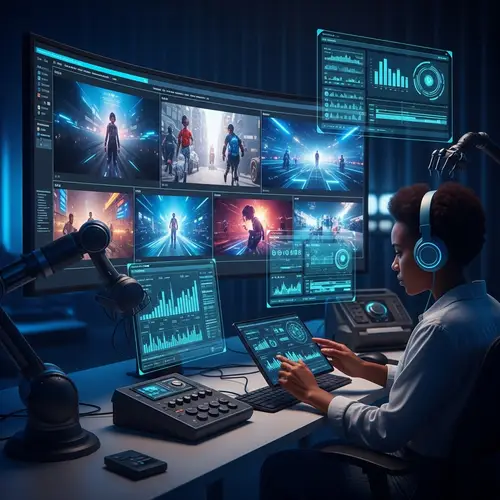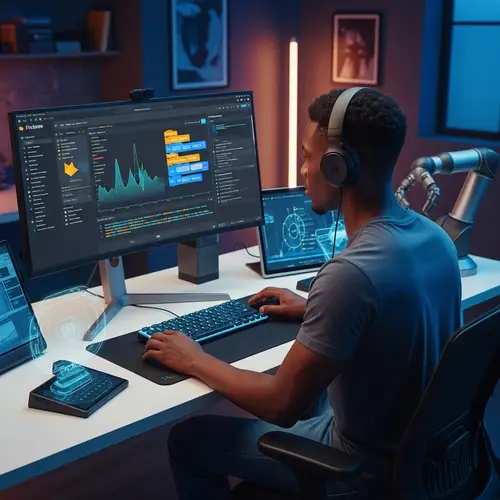To say the least, weather just got smarter

When someone mentions cyclones or hurricanes, most of us either picture dramatic satellite images or brace ourselves for emergency alerts. But what if I told you that AI is stepping up to predict these storms better than ever before? Yeah, it might sound odd, but Google’s DeepMind is doing just that—with their new Weather Lab for AI cyclone forecasting.
Basically, this isn’t just another weather forecast app. This is AI for predicting tropical cyclones with more brainpower behind it. From what I’ve seen, this new project could actually make a difference in how we track and respond to storms. So let’s break it down.
Presentation to DeepMind’s Weather Lab for AI cyclone forecasting
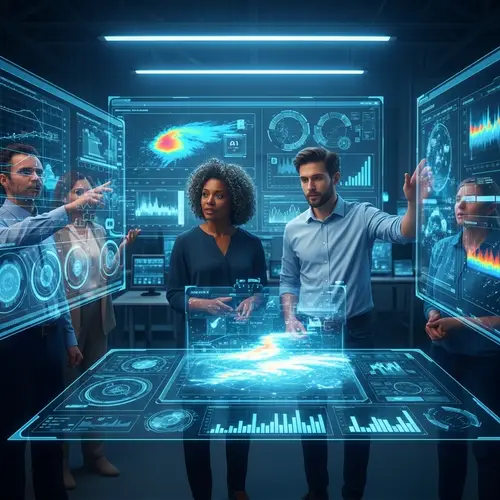
Weather Lab is Google DeepMind’s new AI-powered experiment aimed at transforming how we forecast extreme weather. Specifically, we’re talking tropical cyclones, hurricanes, and major storms. The instrument is packed with meteorological illustrations, performance comparisons, and interactive climate data accessible right from your browser.
Now before you yawn and think it’s just another weather project, hear me out—this one’s backed by advanced calculations and machine learning cyclone tracking models that have shown pretty impressive accuracy already. Not gonna lie, I think this could change how we plan and respond to big storms worldwide.
So, What’s Actually Going On Here?
DeepMind is collaborating with the UK’s national weather service, the Met Office, on this new platform. They’ve designed AI hurricane forecasting accuracy models that use historical data, current atmospheric conditions, and advanced simulations to predict where storms are heading—and how strong they’ll get.
Unlike older systems that sometimes rely on physics-heavy models or are limited by processing speed, Weather Lab taps into Google AI weather prediction tools that can whip up forecasts in minutes, not hours. I could be wrong, but that sounds like a massive leap forward.
What is Weather Lab Based On?

Behind the scenes, Weather Lab runs on advanced machine learning models like GraphCast. These models don’t just look at current conditions—they analyze patterns across time and space. Then, they spit out climate predictions using tons of data—from wind speeds to sea surface temperatures.
AI for predicting tropical cyclones isn’t just about speed. It’s about spotting subtle shifts long before humans—or even traditional systems—notice them. And in this case, Google’s setup has outperformed some established forecasting models at predicting hurricanes in both the Atlantic and Pacific Oceans. That’s not nothing.
What Precisely Sets This AI Forecast Apart From the Swarm?
Okay, you’ve got apps, radars, hourly updates—so what’s so impressive about this one? Honestly, I feel like it’s the mix of accuracy, speed, and usability. DeepMind’s machine learning cyclone tracking models use fewer resources but produce results faster. It’s a little like switching from snail mail to instant messaging, weather-wise.
And it’s not just the tools—they’re also showing you interactive illustrations. For instance, you can see side-by-side comparisons of how well GraphCast compared to gold-standard models. I could be wrong, but the clarity makes it way easier to understand the real-world impact.
The Tech Specs (But Not Too Techy)

Let’s keep it chill but informative: Weather Lab is fed data from multiple global sources and runs simulations that are updated frequently. Its secret sauce is a combination of AI learning layers, highly detailed Earth system models, and constant feedback loops. So yeah, it’s complicated underneath—but you don’t need a PhD to get the gist of it.
And frankly, comparing AI hurricane forecasting accuracy across platforms is easier than ever with Weather Lab. The interface is clean, interactive, and pretty user-focused. Maybe it’s just me, but tech that doesn’t require a manual gets points in my book.
Why This Matters (Like, Really)

Each year, tropical storms and hurricanes cause billions of dollars in damages—and worse, they put lives at risk. So having something that can warn us more accurately and earlier? That’s a game-changer. Think of it as a weather radar with a brain and a bunch more common sense.
In countries that are regularly hit by cyclones—like those across Southeast Asia, parts of the U.S., and Central America—this tech could mean better disaster preparation, faster evacuations, and way less economic damage. That’s not just innovation—it’s useful. Like, seriously useful.
Putting the AI cyclone forecasting to the Test (Spoiler: It’s Good)
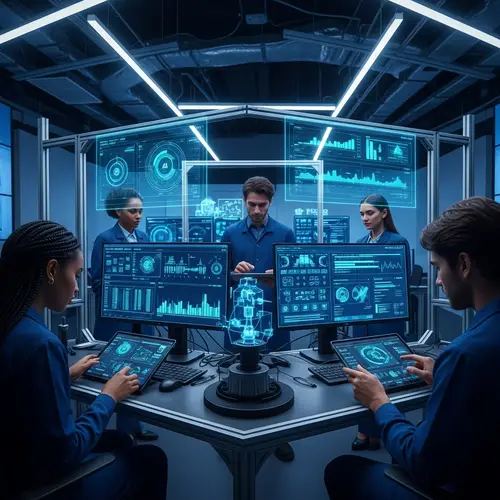
Weather Lab isn’t some mysterious box spitting out answers. They actually show you how their AI performed forecasting real-life hurricanes—like Hurricane Lee. Not only did the model forecast the storm’s path with impressive precision, but it also predicted when it would weaken. That’s the kind of info emergency managers dream about.
Plus, in side-by-side views, the DeepMind Weather Lab tropical storm forecasts held their own—and often led the pack—against systems like HRES and ECMWF (yep, those are the big leagues in weather modeling).
Who’s This For?

This isn’t just for meteorologists locked in labs. It’s designed to be usable by everyone—from students and weather geeks to emergency relief managers and policy folks. You could pull up a timeline of storm predictions from the past decade, flip through graphical simulations, and see accuracy scores—all on one page.
Even if you’re someone who checks the weather twice a day, it’s just cool to know AI could be helping forecast storms better than before. Especially if it means fewer communities getting blindsided by unexpected landfalls.
A Few Limitations (Yeah, It’s Not Magic)
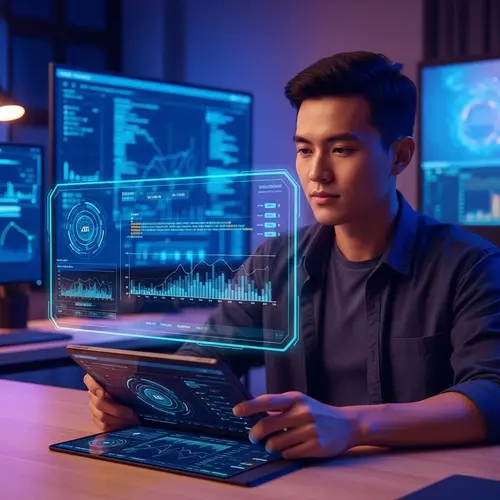
Look, I think it’s important to call it like it is. This tool’s not a crystal ball. Weather is wildly unpredictable sometimes, and even the best AI hurricane forecasting accuracy isn’t flawless. The models still rely on quality data inputs—so satellite errors or gaps in historical records can bring hiccups.
Also, Weather Lab’s visualizations, while helpful, might not provide hyper-local predictions just yet. So, you shouldn’t toss out your local alerts or news apps. Think of this as more of a smart second opinion, not a total replacement—at least not yet.
Down the Road (AKA What’s Next?)

So, where’s this headed? Honestly, I get the vibe that we’re going to see more mix-ups between AI and meteorological forecasting. DeepMind’s approach could be adopted by national weather services, insurance industries, maybe even airlines or shipping companies. Basically, anyone who needs reliable storm tracking—which is a lot of us.
And with climate conditions constantly changing, having smarter systems that learn quickly—that adapt without getting overwhelmed—is going to be key. In my opinion, that’s how AI earns its seat at the table in environmental planning.
FAQs About AI in Weather Forecasting
Weather Lab has shown impressive performance, often surpassing traditional models in both path tracking and intensity forecasting. Still, it’s not perfect, and results depend on data quality and timing.
Yes! The interface is accessible and designed to be used by anyone interested in seeing AI-based tropical cyclone predictions. You don’t need a technical background to explore it.
Traditional forecasting often relies on physics-based simulations. Weather Lab uses machine learning cyclone tracking models trained on loads of historical and current data—making it quicker and sometimes more accurate.
Absolutely. Faster and more precise forecasts help emergency planners make better decisions, potentially saving lives and reducing damage.
The model covers global forecast regions, including areas prone to tropical storms across the Atlantic, Pacific, and Indian Oceans.
Final Thoughts
So, is Weather Lab the future of storm forecasting? Maybe not the ultimate answer just yet, but it’s getting us a lot closer. It’s not magic—but it kinda feels magical when you see the level of forecasting it’s pulling off. If you ask me, it’s one of the most useful applications of AI in the environmental space right now.
In turn, if you’re as curious about the future of forecasts as I am, you might want to check out more ways AI is changing industries—from finance to security. Ask yourself: What else could AI do better?


